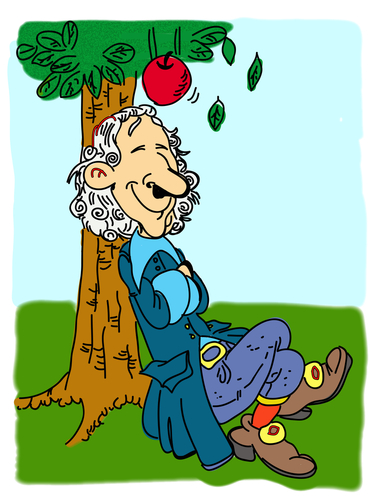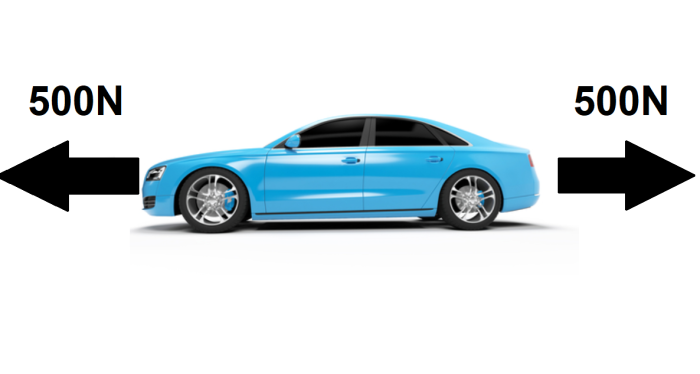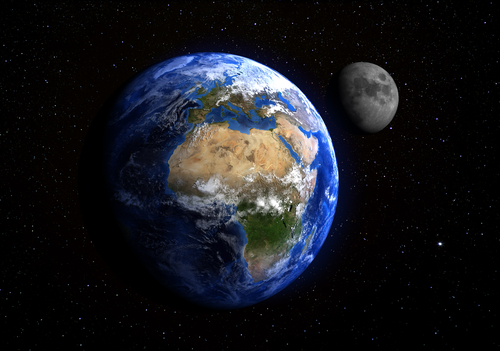You may know Isaac Newton as the scientist who was the first to understand gravity, although most now agree that he was never hit on the head by an apple as the story goes!

Did you know that Newton proved that white light was made up from the colours of the rainbow? He also invented and developed a reflecting telescope. But we will focus here on his essential contribution to the field of forces and motion.
Newton studied forces and gravity closely and wrote the three universal laws of motion. Let's go through them one by one.
Newton's First Law states that an object remains in the same state of motion unless a resultant force (otherwise known as an unbalanced force) acts on it.
What does this mean in practice? It means that if an object is moving at a constant speed, it will continue to move at a constant speed unless it experiences an unbalanced force on it. Similarly, if an object is stationary, it will remain stationary.
Let's imagine that a car is travelling forward at a constant speed.

It will keep moving at a constant speed, in the same direction, unless one of these forces changes.
Newton's Second Law states that a resultant (or unbalanced) force on an object can make that object change its speed or direction.
It also says that the size of the force affects how quickly the motion of the object changes.
Here we can see a swimmer.

Their thrust force forward is larger than their friction force backwards. That means that there is a resultant (overall) force forward. Because of that, the swimmer will accelerate forward, getting faster and faster.
If the swimmer's forward force was greater, they would accelerate even faster.
Newton's Third Law states that when two objects interact, they cause equal and opposite forces on each other.
This law is a bit trickier to understand, but here are some examples that might help.
Imagine you were pushing a trolley. As you push the trolley forward, you feel the trolley pushing backwards.

Another good example is the moon and the Earth. The Earth pulls the moon towards it because of gravity, but the moon pulls back on the Earth with its gravity!

Now that you know some of the basics of Newton's three laws, let's try some questions to check our understanding.








